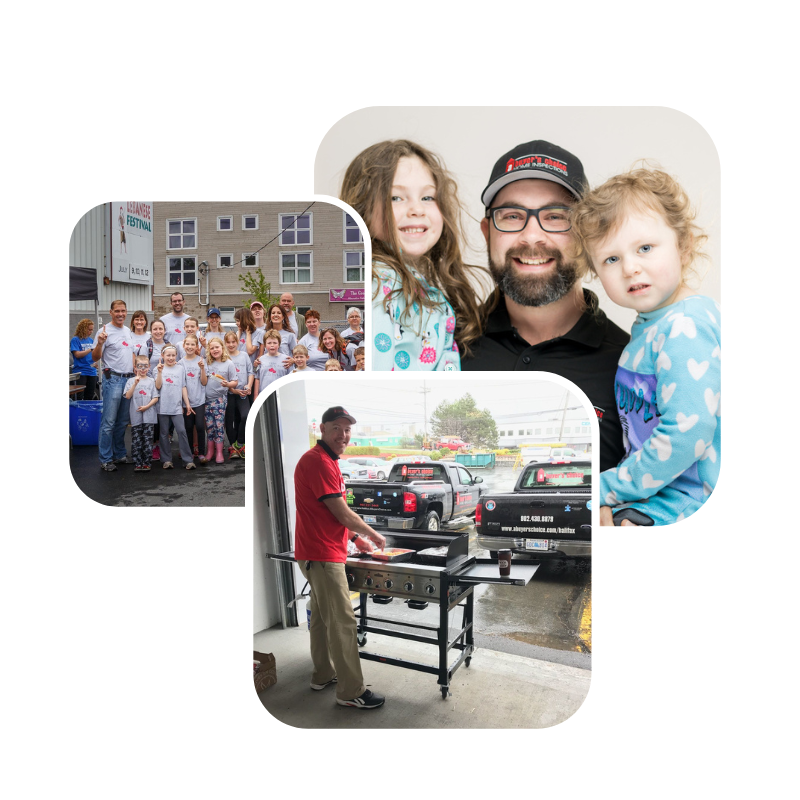The beginning of the school year has been staggered. While some of you have already sent your kids off to school or started studies from home, others will begin this week or next. There’s a different feeling in the air for back to school this year – exciting and stressful all at the same time due to the pandemic.
Whether you’ve chosen in-class, online or both, as a parent, student, teacher or support staff, no decision was easy. That’s why now – more than ever before – we need to support each other and keep everyone safe as a community. No judgement, no criticism, just helping hands.
Educators across the country have been working hard to create a classroom environment that somehow resembles the way kids have been learning for years, while adhering to strict COVID-19 protocols. The reality is that those two goals don’t fully coincide, so we need to work together to ensure a safe learning environment for everyone.
Tips for safely learning in the classroom

But, for all of your efforts, you’ve probably also caught your kids standing way too close to other people, leaving masks in the car or at home, forgetting to wash hands after touching common surfaces, and – we all struggle with this one – touching their faces way too often.
As you prepare to send your kids back into the classroom, be sure to reinforce the everyday COVID-19 precautions and talk about these key points:
- It’s okay to feel nervous. We’re living through unusual and unprecedented times. Fear of the unknown is normal. Our brains are designed to protect us from threats, both real and perceived. Your school is taking steps to protect your health with new policies about masks, physical distancing, deep cleaning and when to use virtual or hybrid model classes.
- Have a plan, but don’t obsess over it. Being prepared always helps. Having an idea for how the new school year is going to work and what you need to do to stay safe is important. The hazard is when we get stuck in planning mode, or hung up on every last detail of what may happen. Sometimes we dwell on worst-case scenarios. Your school has multiple plans in place to address changing circumstances. If you’re familiar with your school’s plans, you’ll know what to expect. No one knows what the future holds. All we can do is take it one day at a time.
- Be flexible. The pandemic has been rapidly developing and changing since the beginning, and there’s no reason to expect that to change. But that’s exactly why your school has more than one plan in place. Your job is to be prepared to adapt to change as needed. Schools may reopen, then shift back to distance learning or adopt a hybrid model as needed based on your local developments. That’s nothing to fear. Remember that any changes are in your best interest.
- Stay positive. While you may not always be able to control your circumstances, you can control your reactions. Don’t try to suppress negative or anxious thoughts. If you deny them, they’ll only come back up. Instead, acknowledge them without judgement, and try to find a way to refocus them with positive affirmations that everyone is doing the best they can to stay safe and plans will be adjusted if anything changes.
Tips for safely learning at home
While many students will be learning from home for the foreseeable future, it’s important to ensure they have comfortable learning environments that promote good posture and helps keep them focused on the learning tasks at hand. Here are some tips on promoting safe learning from home:
- Create a routine. Make sure you take regular breaks to move around as well as eat snacks and lunch like you would at school. Complete homework at regular times as well so that you can stay focused and productive.
- Use a comfortable chair. It’s important to promote comfort and proper posture while learning much like schools do with designated seating and desks. Having a dedicated learning space will also help separate learning time from leisure.
- Keep in touch with peers. While kids tend to text their friends a lot, it’s also important to encourage safe social visits where possible. Interaction is so important in keeping everyone’s mental health in top shape as well. When visits aren’t possible, be sure to promote video and phone calls.
Best of luck to everyone as you return to school, from our ABCHI family to yours!









